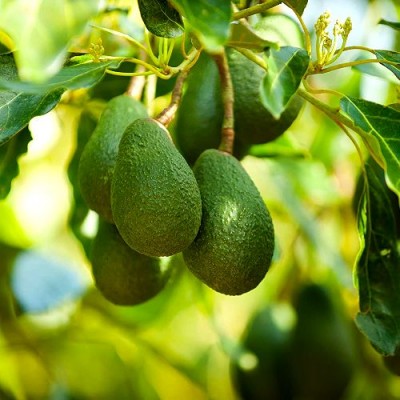This image is for reference purpose only, Photo May Slightly Different From Actual Item in Terms of Color Due to the Lighting During Photo Shooting or the Monitor's Display.
Apple
There are many reasons for a family to appreciate an apple tree growing in the backyard. For one, a healthy apple tree makes a pleasant sight for both family members and visitors to enjoy. Secondly, a family can learn a lot from observing the different stages in the growth of an apple tree. Furthermore, each member of the family can help in making sure the apple tree receives the care it needs to flourish. With proper care, an apple tree can become an appealing fixture in a family's backyard.
Basic Care Tips
An apple tree needs a certain amount of attention from its caregivers to ensure that it grows in a healthy way. For instance, an apple tree needs to be planted in a place where it will receive enough sunlight to grow. Furthermore, the spot should have adequate drainage so the apple tree will not absorb more water than it needs to live. In fact, if an apple tree's roots take in too much water there's a chance the tree will not survive.
Pruning is also an important part of caring for an apple tree. This process removes dead branches and prevents limbs from crowding one another. Furthermore, pruning allows apples enough room to grow. In addition to pruning, the caregivers of an apple tree must be on the lookout for signs of disease or pests. For instance, if the leaves of an apple tree take on an unhealthy appearance the tree's caregivers should consult the owner of a tree nursery about the situation.
Common Apple Tree Pests
Not surprisingly, apple trees are also vulnerable to pests. The codling moth is an example of one of those pests that sometimes affects apple trees. The moth larvae can gain access to both an apple tree's leaves and fruit. Fortunately, there are traps that can help with a codling moth problem.
Apple maggots are another pest that affects apple trees. The maggots gain access to the tree, lay eggs, and tunnel into the apples. In short, apple maggots can ruin many pieces of fruit on an apple tree. Once again, there are some traps that can help with an apple maggot problem.
Harvesting
Harvesting is one of the most enjoyable parts of caring for an apple tree. Ripe apples have a firm surface as well as a crisp texture. The caregivers of an apple tree should check to see when it is time to harvest their particular variety of apples. Once caregivers have a few seasons of experience with handling mature apples, they will be better able to determine when they are ready to harvest.
In many cases, a caregiver will find apples on the ground. There are many reasons why apples fall to the ground before they are ripe. For instance, deer sometimes munch on apples and knock them to the ground. In addition, a strong windstorm will cause some apples to fall. Fallen apples that are rotting and bruised should be cleared away from the area by caregivers so they don't attract pests
Apple Plant (Grafted)
- Live plant along with Plastic pot.
- Plants height with pot is 1-2 feet and pot size is 8 inch diameter.
- Plants nature is outdoor, grows up to 30-50 feet, less watering.
- Grafted plant, starts fruiting in 3 years.
- Best fruit plant, easy maintenance, fast growing.



